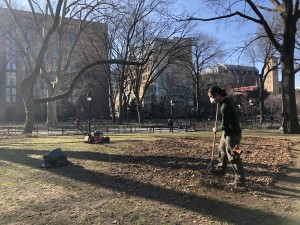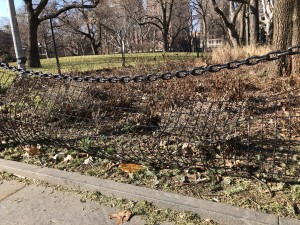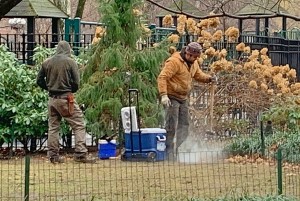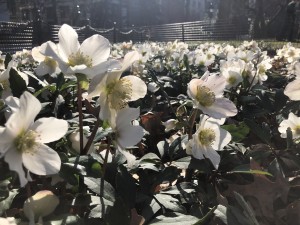How Does a Washington Square Park Gardener Spend Their Winter Days?
In winter, the grass doesn’t need mowing and the garden beds don’t need weeding, but there’s plenty to do. So how does the landscapes team—Gui, Dwayne, and Tyson—keep busy with during the colder months? Winter is the perfect time to take care of projects that the busier seasons don’t leave time for. Maintenance is the name of the game.
Raking
Plenty of Park trees means plenty of leaves. Even with crews of volunteers from the monthly clean up program coming to help rake, the team has a lot of ground to cover…or uncover. They don’t rake to keep the Park looking tidy, it’s actually an important part of keeping the landscapes healthy. Without raking, leaves can block essential sunlight from getting through to lawns and garden beds, which can kill off dormant plants and grass. But just because they can’t stay where they are doesn’t mean that fallen leaves are trash. After being raked into large reusable bags, the leaves are chopped up and turned into mulch that gets used around the Park.
Pruning
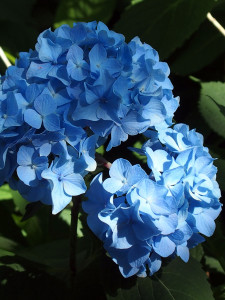
It may seem counterintuitive to cut back plants that you’re trying to grow, but pruning is incredibly important for the health of many different plants in the Park. Pruning is the process of removing dead limbs, broken branches, and diseased sections to allow for better and more symmetrical growth. Some shrubs require careful pruning to promote flowering come springtime. Winter is also a good time to trim “suckers” on trees—the small branches that sprout on the trunk—which can grow into full limbs if left alone. Catching them early helps the team control the shape and size of trees with minimal effort, which helps keep the trees structurally sound.
Fence Repair
While the fencing itself isn’t a living, breathing part of the Park’s horticulture, it is an essential element. Fencing helps to protect plantings from being trampled by millions of Park users, and is particularly important in winter and spring when Park users can’t see perennials growing. Just as these perennial beds are prone to the Park’s many users, the fencing itself can suffer from misuse.The team checks each stretch of fencing for disrepair on a regular basis in the winter months. Sometimes it’s an easy fix, sometimes an entire section needs replacing. It might not be as pretty as a new bed of pachysandra, but it’s an important chore nevertheless.
Pest Control
Winter also gives the horticulture team the opportunity to deal with the Park’s most unwelcome neighbors: rats. Although these critters are an unfortunate inevitability in a place like NYC, that doesn’t mean we can’t fight back! The landscapes team uses the colder months to do a full sweep of the Park with this poison alternative, leaving the warmer months for spot-treatments.
Rat Ice is dry ice (carbon dioxide), and with the proper training it can be used as a safe and more humane pest control measure. Where traditional poison has to be spread around an area and can be accidentally ingested by other animals, rat ice is administered directly into a rat burrow. All points of egress are covered with soil, and as the rat ice begins to turn to gas the “smoke” fills the burrow. The lack of oxygen asphyxiates the rats and they remain buried under ground. Completed areas are monitored for any new holes, which are retreated until no new ones appear. That continuing maintenance is the key to success. Getting rid of every rat is an unattainable goal, but the efforts of the landscapes team are keeping them at bay.
Always Growing
Just because we don’t see as many flowers blooming doesn’t mean the Park is dormant. It requires constant attention and year-round maintenance to stay the beautiful place that it is. But the landscapes team is certainly up to the task.
Afterall, a gardener’s work is never done.

